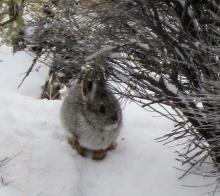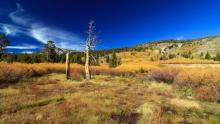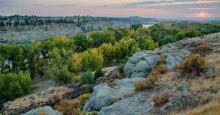Like the emigrants of yesterday, we can traverse the wilderness on foot, in the unaltered landscape of Nevada’s majestic high desert.
For those who know how to decipher its code, the earth tells a story. Hidden deep within the quiet Nevada desert is a deluge of life and history.
Nearly 1,300 acres of prime wildlife habitat have been protected by the Nevada Land Trust and the Bureau of Land Management (BLM) in the Little High Rock Canyon, Poodle Mountain and Hardin City areas, within or nearby the Black Rock Desert National Conservation Area. Completed in 2010, this resource-rich area is another important acquisition made under the Southern Nevada Public Land Management Act (SNPLMA) program. Nevada Land Trust nominated this 1,282-acre project in 2007, during Round 8 of SNPLMA, and helped BLM successfully carry out the acquisition.
With this acquisition, the BLM has a greater ability to protect important wildlife resources, as well as the cultural, paleontological, and historic values of this special place. Among the most notable are protection of significant historic and archaeological sites near Hardin City and protection of access to Double Hot Springs and the wet meadows surrounding Hardin City Hot Springs.
"Good things come in small packages," said Alicia Reban, Executive Director of the Nevada Land Trust. "One of the gems inside this package is property in the Little High Rock Canyon Wilderness. Several hundred acres of land and water in the Little High Rock Creek are now owned by BLM for the benefit of the public. To protect the land is wonderful – to keep the water with the land is divine," Reban added.
In an effort to protect the landscapes surrounding the historic Emigrant Trail, the area was designated a National Conservation Area (NCA): "The relative absence of development in the Black Rock Desert and High Rock Canyon areas from emigrant times to the present day offers a unique opportunity to capture the terrain, sights and conditions of the overland trails as they were experienced by the emigrants and to make available to both present and future generations of Americans the opportunity of experiencing emigrant conditions in an unaltered setting."
Indeed, the NCA draws visitors to the area and helps support the economies of surrounding gateway communities, while hunting, camping, photography, and viewing wild horses and wildlife are among the many recreational activities available to the public. However the protection of this land offers something infinitely more valuable to present and future generations: to walk where those who came before us have walked, and to see what those who came before us have seen, is to understand what makes this land so sacred to all who would make it their home.


